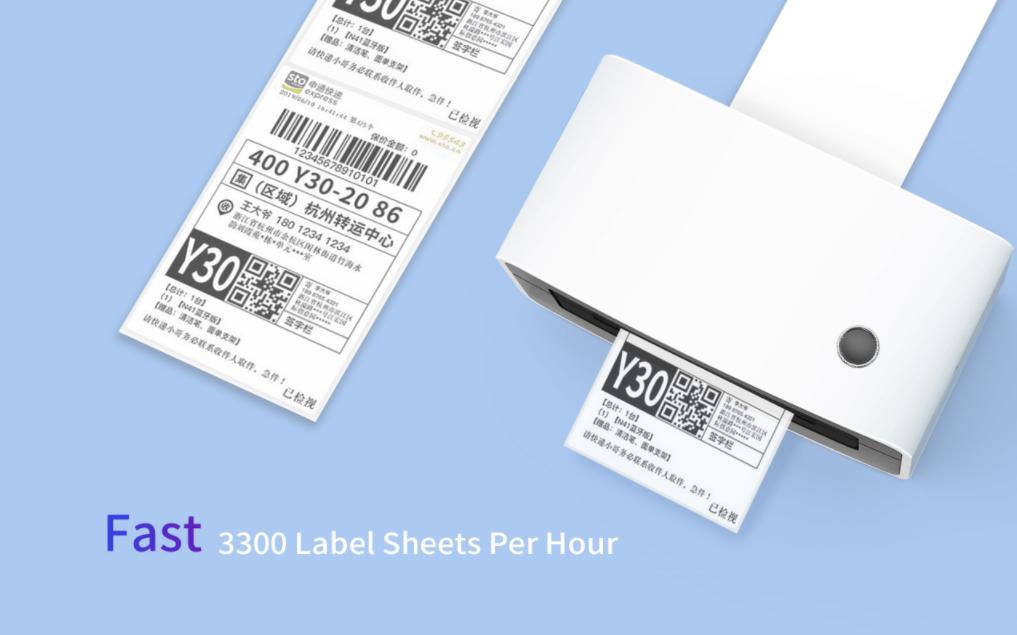How to Choose the Right DPI for Your Thermal Transfer Label Printer
When it comes to thermal transfer label printers, understanding the concept of DPI and choosing the right resolution for your specific needs is crucial. In this article, we will discuss the importance of DPI in thermal transfer label printers, the common resolutions available, and how to choose the right DPI for your specific needs.
Understanding DPI in Thermal Transfer Label Printers
DPI (dots per inch) is a measure of the number of dots printed per inch on a given medium. It is a key factor in determining the quality and resolution of digital images. Generally, the higher the DPI, the better the image detail and quality. Conversely, lower DPI printers may output images that are relatively rougher in detail and quality. Therefore, understanding DPI indicators when purchasing thermal transfer label printers is crucial to ensuring print quality.
Classification of Thermal Transfer Label Printers
According to different printing accuracies (DPI), we can roughly divide thermal transfer label printers into three categories: low-DPI printers, medium-DPI printers, and high-DPI printers.
a. Low-DPI - 203DPI Thermal Transfer Label Printer
Low-DPI printers usually have a resolution of around 200 dpi, with the most common being 203dpi. These printers are suitable for simple text labels or larger barcodes that do not require high clarity requirements, such as warehouse shelf labels and logistics package labels.

Due to their low cost, low-DPI printers are more common in some small businesses or home scenarios. However, these printers are relatively limited in detail performance and image quality and are not suitable for occasions that require high-quality images.
b. Medium-DPI - 300DPI Thermal Transfer Label Printer
The resolution of medium-DPI printers is generally 300 dpi. These printers have good performance in both image and text quality and can meet most daily label printing needs such as clothing, food, daily necessities, logistics, electronic devices, while maintaining a relatively low cost and good cost-effectiveness. They are considered the mainstream label printers in the market.
For example, ingredient lists on food packaging or usage instructions on cosmetic bottles. These printers are more common in small and medium-sized enterprises because they can meet general label needs at a reasonable price.
Taking cosmetic labels as an example, medium-DPI printers can clearly present information such as ingredients and shelf life while ensuring that images on labels have high clarity so that consumers can easily identify relevant information. In addition, medium-DPI printers can also be used to print equipment serial numbers in the electronics industry.
c. High-DPI - 600DPI Thermal Transfer Label Printer
High-DPI printers usually refer to devices with a resolution of 600 dpi or even higher. These printers can achieve higher quality images and details and are suitable for labels of precision equipment and high-end products, such as jewelry, medical equipment, research laboratory supplies. Although they have a higher cost, for occasions that have strict requirements on label quality, high DPI printers are the best choice.
Take medical equipment as an example. These products usually require accurate identification and clear instructions for use to ensure that users can operate correctly and safely. In this case, high DPI printers can provide high-quality labels for products and meet professional requirements.
Similarly, in the jewelry industry, high DPI printers can provide exquisite packaging labels for jewelry products, showcasing the unique features of products and enhancing brand image.
Q&A
Q1: Are 300dpi or 600dpi label printers better?
The resolution of label printers is not the higher the better. We should comprehensively consider printing needs, application scenarios, and costs to determine the appropriate DPI.
In addition, it should be pointed out that high DPI printers need to process more data during printing, so printing speed may be affected. For scenarios that require fast printing of a large number of labels, appropriately reducing DPI resolution may help improve production efficiency.
Q2: What is the difference between 203dpi and 300dpi label printers when printing barcodes?
In terms of clarity, 300dpi printers perform better than 203dpi printers. Therefore, when printing barcodes, they can provide clearer and more delicate effects. This means that when scanning barcodes, barcodes generated by 300dpi printers are relatively easier to recognize.
Q3: What is the maximum resolution of thermal transfer label printers?
Currently, the maximum resolution of thermal transfer label printers is usually 600dpi. However, due to the continuous development of technology, higher resolution thermal transfer label printers may appear in the future.
Conclusion
Thermal transfer label printers play an important role in label printing across various industries. DPI, as a key indicator of measuring print quality, has different types suitable for different printing needs. When choosing a thermal transfer label printer, it’s crucial to consider your actual needs and budget to select the right DPI type.
HPRT is an excellent manufacturer of system printing solutions with more than ten years of experience in the printer industry. It provides all sort of thermal printers including various thermal transfer label printers and direct thermal label printers. If you have any questions related to printing, please feel free to contact us, we will provide you with professional printing solutions.








